On two wheels: Biking in Metro Manila

It’s so easy to get to work in Metro Manila, said no one ever.
The truth is, it’s hell. Start with the obstacle course sidewalks: dodge the piles of poop, walk around the cars, and twist sideways so someone else can pass. This is a game no one wins.
Your prize: standing for half an hour trying to get a ride. The choices: squeezing into a magically expanding jeepney or a bumpy tricycle, fighting your way onto a bus, or joining the daily LRT or MRT battle.
If you're lucky, this is already the ride that will take you to where you need to be. For most people, it's the first of several. Those who have cars might be more comfortable, but they’ll still be in the world's worst traffic, according to Waze.
It's enough to drive a person mad – or away, which may explain why people choose to pack up and leave for the province, or for another country. But most of us don't have that luxury, and are stuck with the realities of "Carmageddon" and "EDSAdness." Sure, we can still laugh about these things because, well, Filipinos are so resilient!
There is another way, though. It’s not easy, but if you like the idea of freedom – from traffic, and also from the feeling that most of your time is wasted on the road – then it's time to try biking to work.
Two wheels instead of four
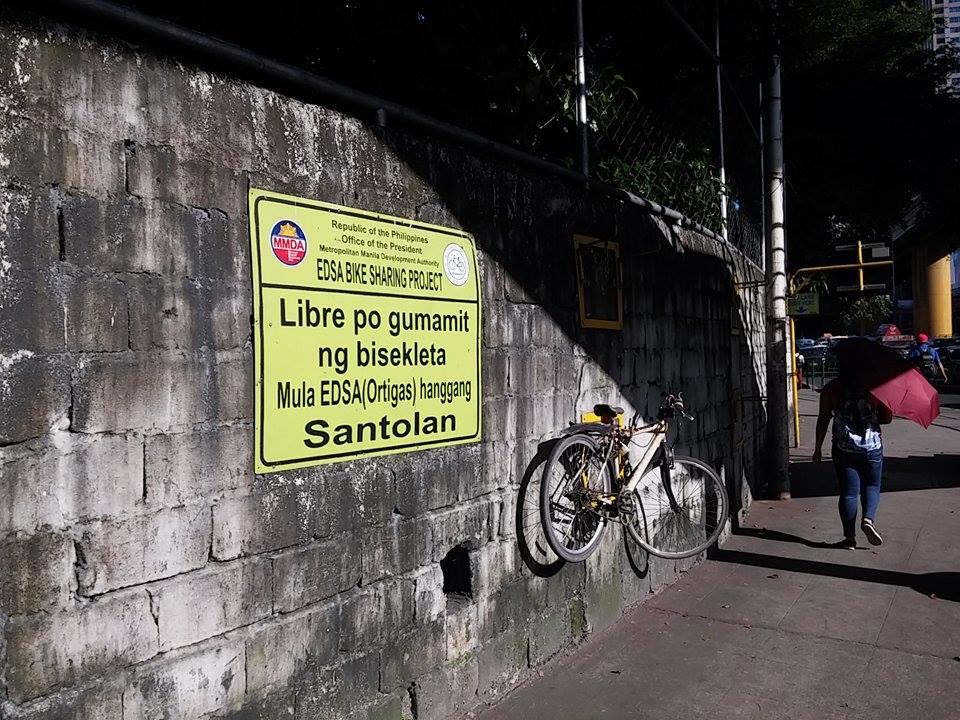
More and more people are doing it, despite the many "buts" and "what ifs." The most common concerns include the lack of bike lanes, difficulty in finding secure parking, and pollution on the road. So how do we deal with these things? It depends on the biker.
For art director Ekong Caruncho, it took quite some time, and plenty of persistence. Ekong, who uses a folding bike, shouldn't have to deal with the lack of secure parking. However, not all office buildings are supportive. "I had to process paperwork for me to do what I do. Complete with notarization! Also, I’m not allowed to bring it in without a bike bag, so that’s an extra weight on my end," shares Ekong, who first began biking to work in 2006.
After an accident, his family banned him from biking, but a few years later he got the courage to get his own bike. It wasn't long before he went back to biking to work. "It came to point where I got tired of complaining about the traffic, the fellow commuters and the pollution, so I thought of biking," he says.
Ekong, who also bikes for the exercise, often varies his route. "My route takes me everywhere. It doesn’t have to be from point A to point B. I make my office point C, and point B is where I traverse given the amount of time I have," he says. As a result, he gets to sneak in a bit of adventure instead of enduring the usual morning commute. Ekong is also one of the administrators of Facebook group Bike to Work Pilipinas, where bikers exchange information on traffic, rerouting, and maintenance tips.
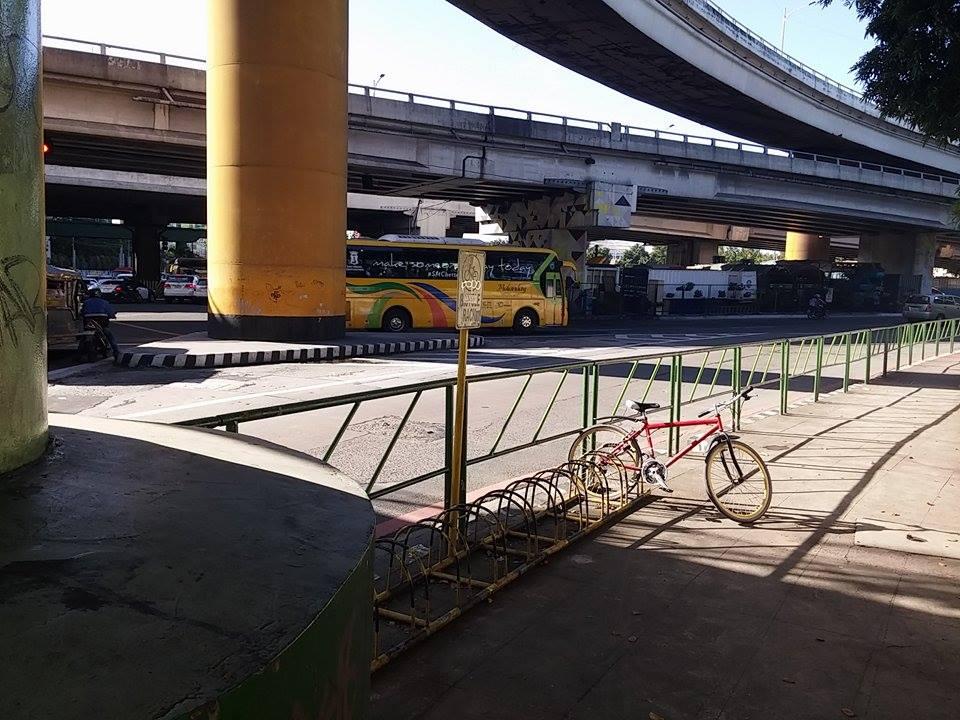
For writer Amanda Lago, it was listening to a friend's weekly amazing bike stories that finally convinced her to get her own bike. "It was daunting at first because I wasn’t used to all the stimuli and being so 'naked' on the road. But it took maybe just a week of biking daily for me to get used to everything and get comfortable on two wheels," shares Amanda, who now bikes every day. "I really wish we could have bike lanes, but for now I’d just be happy with seeing less smoke belchers on the road."
The worst thing about biking, she says, is facing the pollution daily. "Seeing the black smoke coming out of the tailpipes of cars and [mostly] jeepneys really makes my blood boil," she says.
There are dust masks, but these aren't that effective, especially when bikers get stuck behind vehicles, with little choice but to hold their breath until they inevitably give up and inhale all the smoke. "The roads were not built with bicycles in mind, so it’s a challenge to establish my space on the road. I usually end up pedaling in the gutter or the spaces in-between cars," Amanda says.
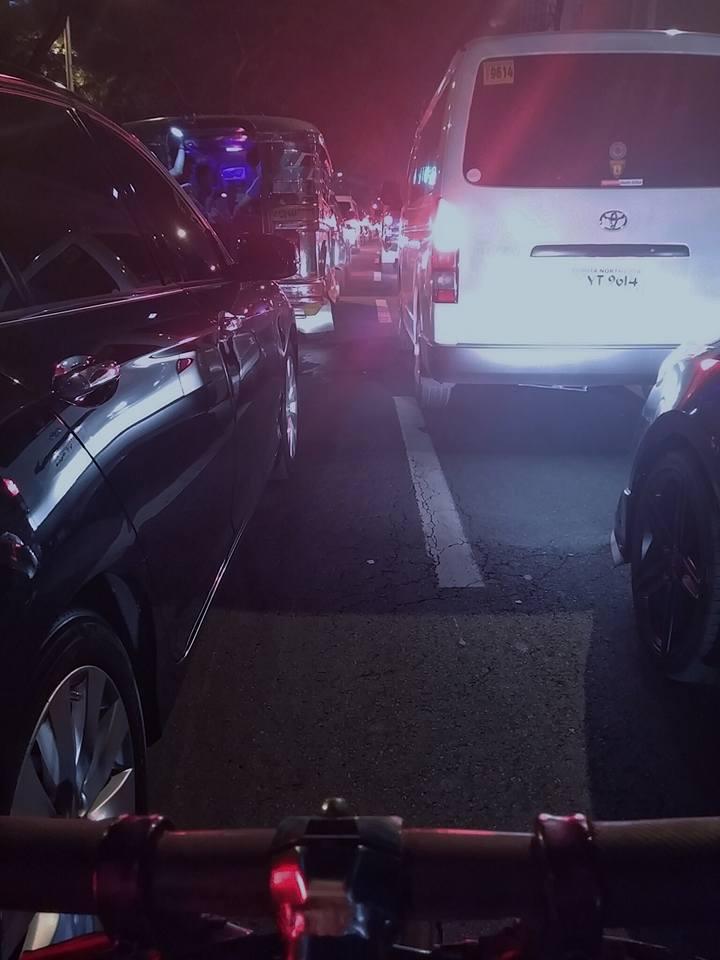
Musician Casey Concepcion agrees, saying he bikes defensively because drivers don't know how to share the road. Although Casey drives most of the time, he bikes to work at least once a week. "Maybe when the weather is much cooler, and the motorists are more courteous toward bikers, and when there is secure bike parking with pay shower rooms," Casey says when asked what would make him bike more often.
Bike lanes
There have been some improvements, including some areas with bike lanes, such as Ortigas. There's also a bike lane from Ortigas to Cubao, although the bike lane is also the sidewalk and the bus terminal. "When it's busy you have to walk out of courtesy. It's still a lot better than having to go around Crame to get there. It really cuts your travel time. It used to take me an hour biking to Cubao from Makati, now it takes 30 to 45 minutes," shares Oliver Mejia, an operations manager at a BPO startup.
When it comes to parking, there's an ordinance in Quezon City that requires establishments to provide bicycle parking. "Finding a space to park my bike can be challenging, though more and more establishments are putting in bike racks, so I’m taking that as a sign that the city is becoming more bike-friendly," observes Amanda, who usually bikes around Makati.
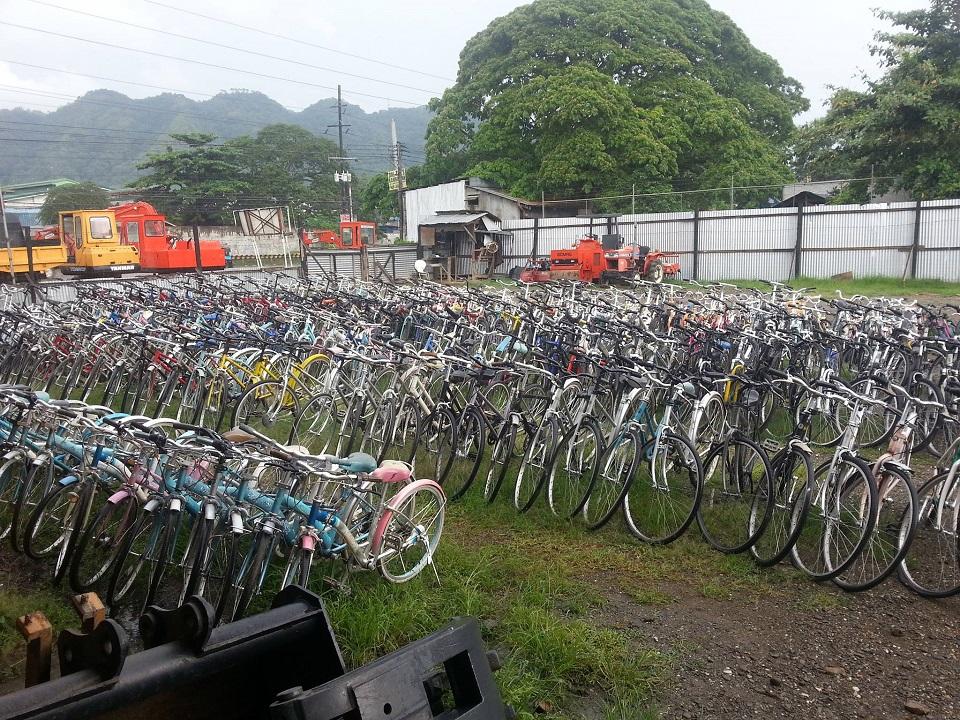
Bumps on the road...
On top of parking facilities and shower rooms, the roads are a major concern for bikers. What would mean a slight bump for a larger vehicle could mean a major accident for a biker. "Metro Manila roads are laced with potholes, inappropriate placement of cat’s eyes, manholes and other road embellishments," Ekong says.
On the other hand, the terrain is manageable. "The best thing is that we have an expansive, relatively flat city so it's definitely biker-friendly, unlike say, Hong Kong where there are a lot of steep climbs. Some bikers love uphill biking more than others, but Manila's great for all kinds of bikers," says senior manager Mik B., who sometimes bikes to work. Bikers also need to be wary of thieves, Mik points out.
Then there are pedestrians, who don't pay as much attention to bikers. "What I hate more than a person on two wheels in front of me with a big exhaust pipe is a person on two wheels in front of me with headphones on and without proper gearing. It’s not a law for us to wear helmets, but these bikers should exercise care," Ekong says.
Because cycling isn't regulated, bikers need to adapt to traffic rules. Oliver shares that he learned by observing other bikers. "When I started, I had a bike I never rode, and I looked around and saw people biking. I looked at their patterns – where they bike, where they stop, how cars avoid them. And it gave me the idea that it can be done," he said. Oliver bikes most of the time, exploring different routes on weekends and biking to work on weekdays.
...and a change of clothes
For corporate employees, the dress code is a concern, but nothing that can't be dealt with. "You're supposed to be an executive and look all nice and spiffy. But sometimes leather shoes don't work well with bikes. So you have to redefine the corporate image. Instead of leather shoes, I wear leather boots, something more comfortable. I just learned to wear an undershirt, change clothes, get to work earlier and take an alcohol bath," Oliver says.
Savings and health benefits
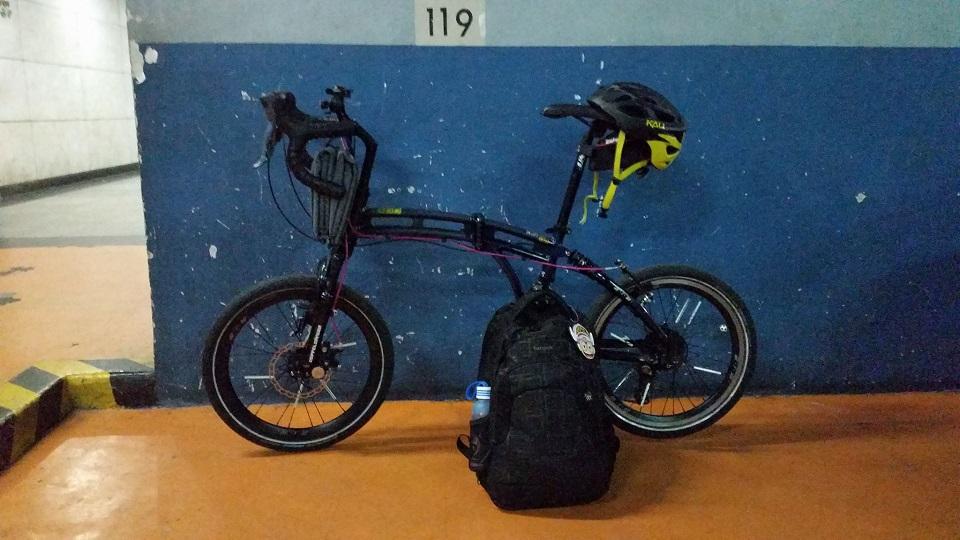
It requires some adjusting, but the benefits are more than worth it. "If we’re talking about practicality, the argument in favor of biking writes itself — you avoid the traffic, you don’t have to spend anything for gas or parking, and you sneak in some cardio while you’re at it," Amanda says when asked how she would encourage others to bike.
"The worst thing I’ve seen as far as biking to work goes is being condemned by motorists for the faults of our motorcycling brethren. The best thing is passing thousands of cars in traffic. I survived lots of payday weekends by riding a bike," says Ekong, who takes half an hour to bike 6 km home from his office.
Indeed, the main advantage of biking in Metro Manila is escaping the traffic. After all, scenic routes are few and far between. Despite this, there's also a certain romance to it. "The best thing – a toss up between not being stuck in traffic, and being able to see the city unfiltered by a car window. But really there are so many 'best' things! I also love the fact that you can get to a place without spending a single peso! And the freewheeling feeling of the wind in my hair, and hearing it whistling in my ear when I’m biking fast on an open road— it’s so cheesy, but I’m addicted to the feeling," shares Amanda.
Biking is also a good way to unwind. "You don't have to worry, instead of thinking about the traffic you can think, 'What else can I do before I get home?,” says Oliver, who notes that what takes him 10 to 15 minutes on a bike could take 45 minutes on foot, or two hours by car.
A different perspective on the city
It's easy to hate the city, and on some days it really does feel like little more than a sprawling mess of ugliness. Getting on a bike changes that, at least for a while. It could just be the freedom from having to sit and stare at the endless sea of red lights ahead. Or it could be how biking opens your eyes and makes little things enjoyable, even getting lost.
Amanda shares a recent experience in a shady area full of dead-end streets. "I was biking slowly because the streets were dense with people, and they all parted as I passed by. There were a lot of kids on the street, and one of them even stood in front of my bike and gave me this evil sort of villain laugh before he moved aside to let me through. It was all so surreal. I would’ve been scared if it wasn’t so strange. When I couldn’t go any further, I doubled back, trying to retrace my steps so I could go back to where I came from, but when I got out of there, I ended up on the road I was heading towards in the first place. How weird is that? I was so disoriented and so fascinated. You really discover the strangest things on a bike," she says.
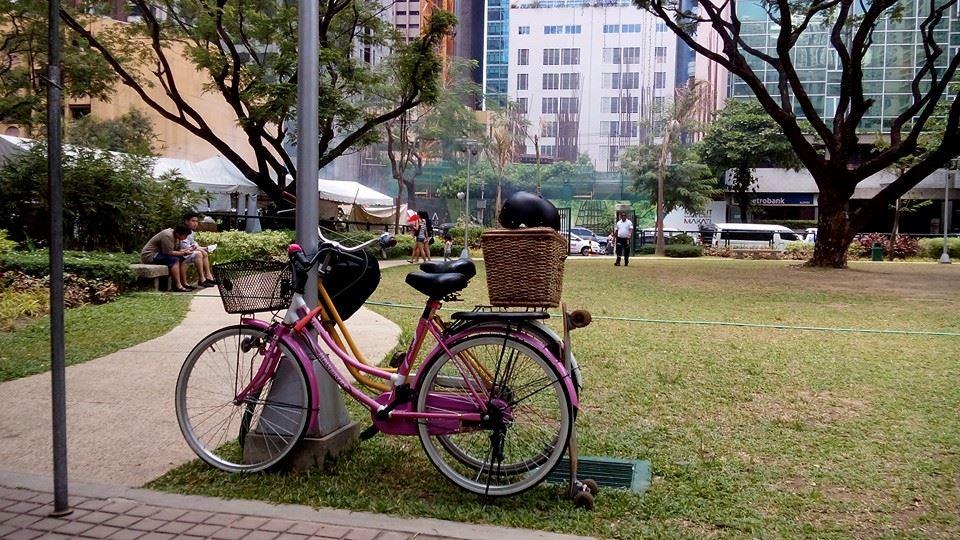
Looking at Metro Manila traffic, some people would argue that bikers are nuts. But despite the danger and all the accidents, we keep at it, and not just for the personal benefits.
"I'm going out of my way to show people it can be done. If I have a friend who wants to try it, I map a route and I test it, then we can try it together. It saves you so much time. It's just a little sweat. You can always change your shirt," Oliver says. Biking is about solving problems. It’s about creating a way, never mind that there is no path. — BM, GMA News



